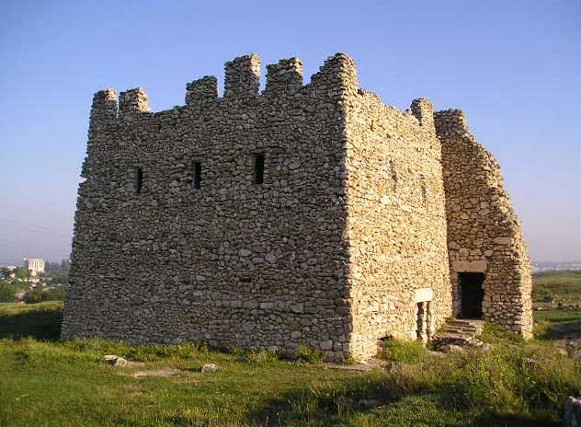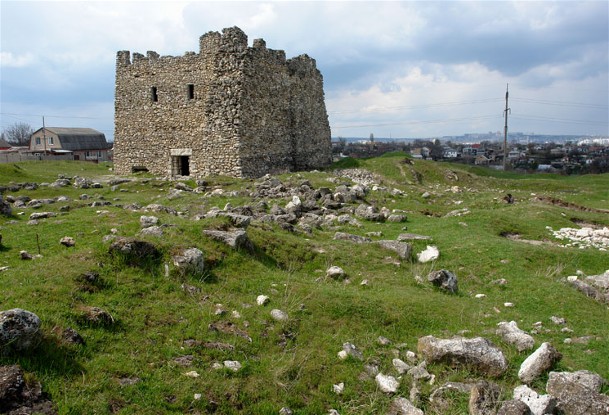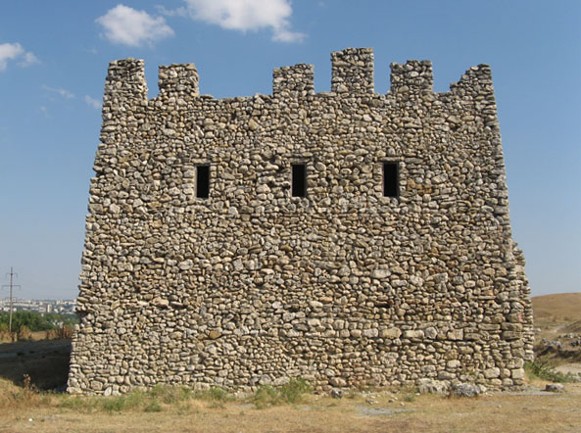Neapolis
Neapolis [Неаполь Скитський or Скіфський; Neapol Skytskyi or Skifskyi]. A Scythian city located on the Salhyr River southeast of Simferopol, Crimea. Digging began as early as 1827, but systematic exploration began in 1945. Founded in the 3rd century BC, Neapolis quickly grew into a substantial trade and crafts center. The Scythians established their capital there in the 3rd century BC after being forced south from the Black Sea steppe by the Sarmatians. Neapolis reached the zenith of its influence in the 2nd century BC under kings Skhilouros and Palakhos. The Scythians' power was checked in the 2nd and 3rd centuries AD by the Bosporan Kingdom and during the 3rd and 4th centuries Neapolis fell under attacks by Goths and Huns, and the city was abandoned.
The city covered an area of approximately 20 hectares. It was surrounded by thick walls (up to 12 m) with towers. Inside the walls were stone buildings (some covered with tiles and frescoes), warehouses, and private homes. Round semi-pit dwellings resembling nomads' tents were also found. Scythians formed a majority of the city's population, but there were also numerous Sarmatians, Taurians, and Greeks who in particular exerted a strong cultural influence on the city. The most striking remains of Neapolis are the mausoleums of the Scythian rulers and burial chambers dug into rock formations.
[This article originally appeared in the Encyclopedia of Ukraine, vol. 3 (1993).]



.jpg)
